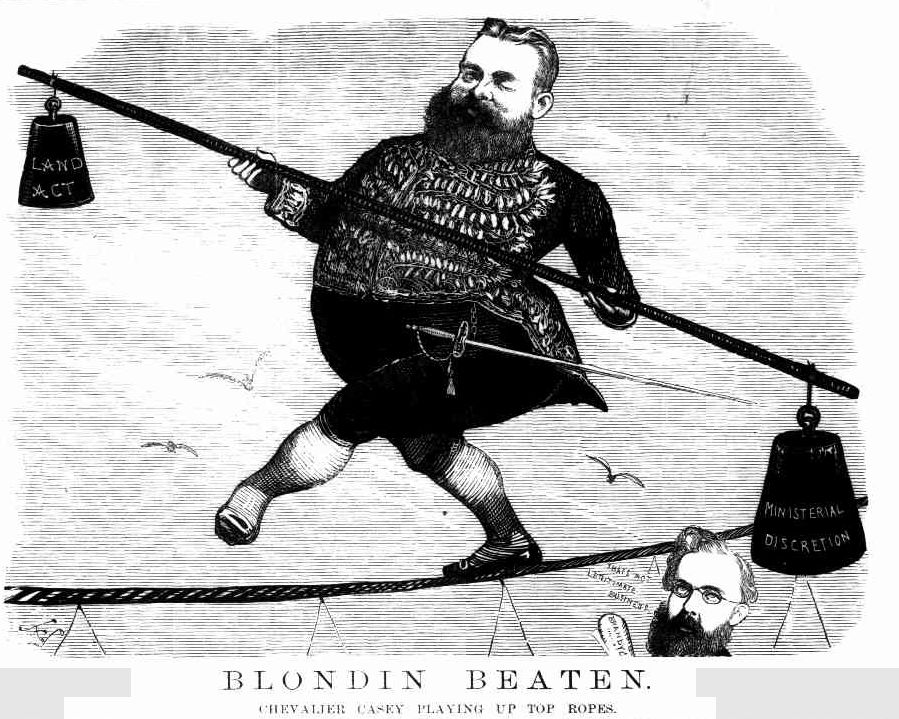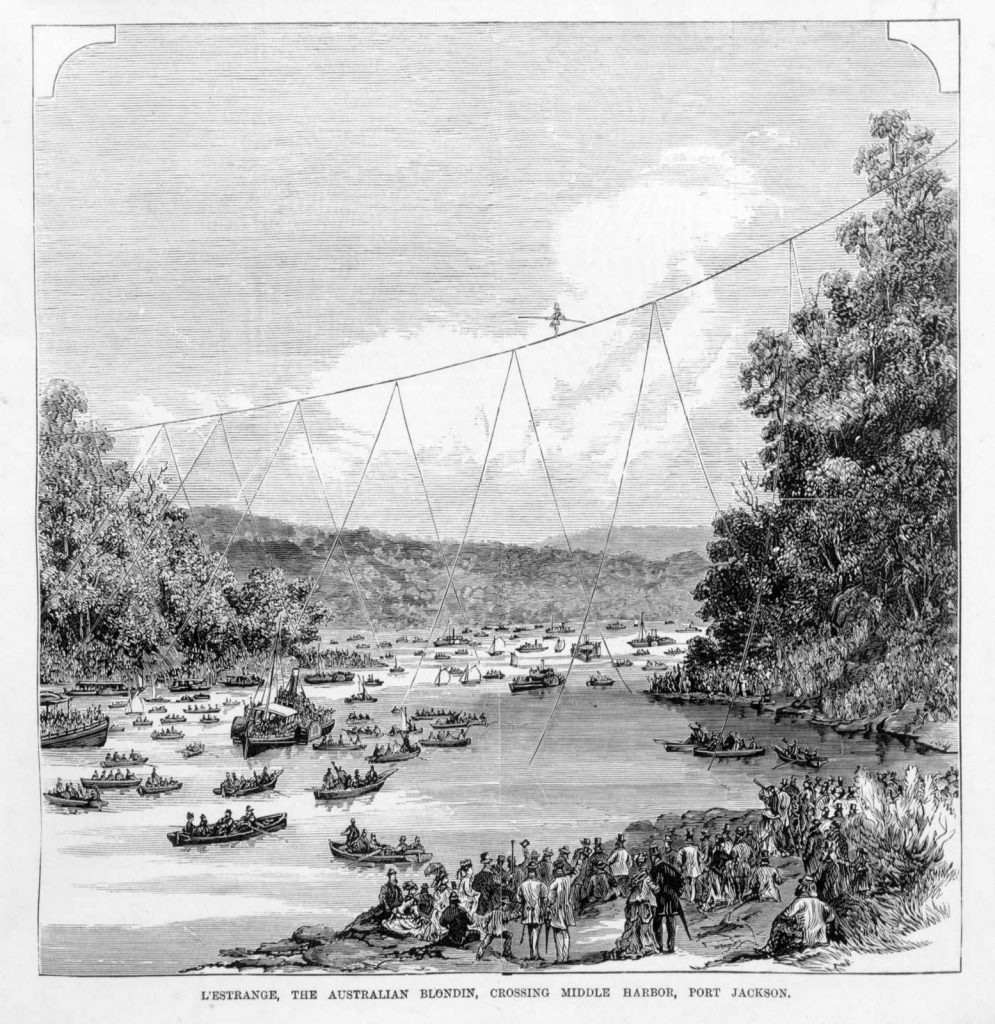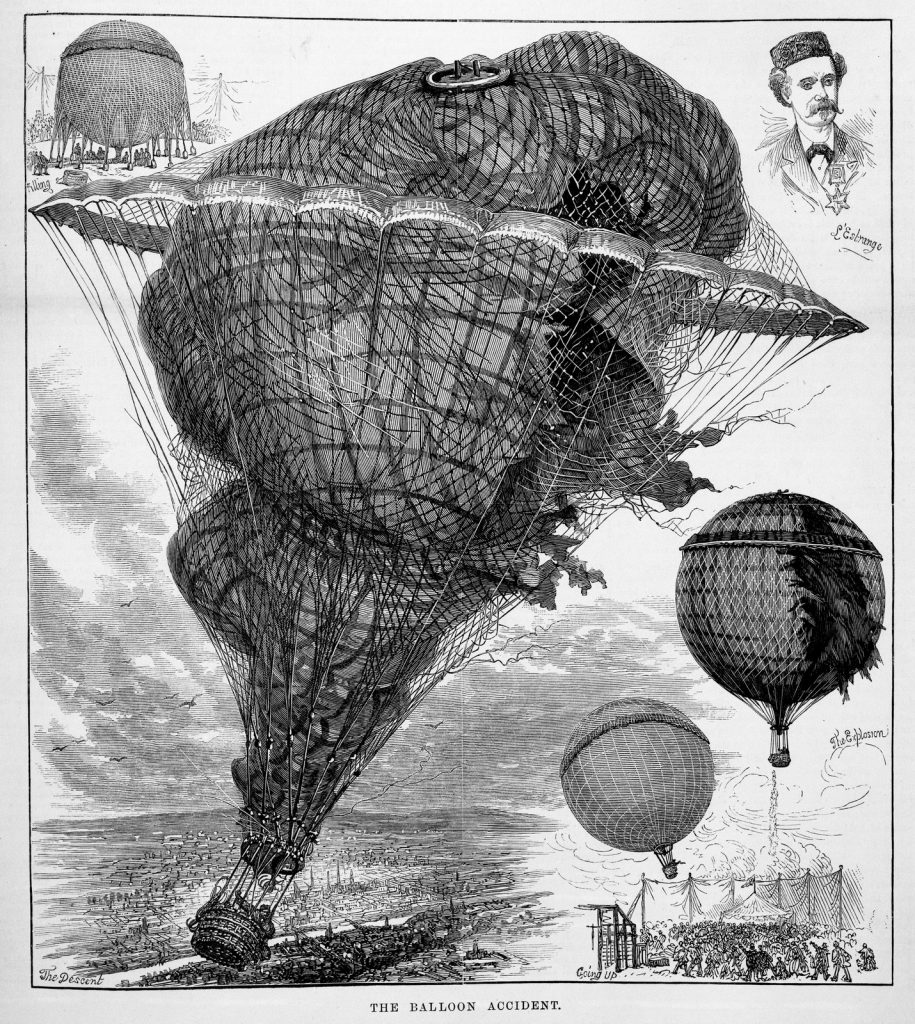In July 1874, world famous French funambulist (tightrope walker), Charles ‘Le Chevalier’ Blondin, arrived in Brisbane to prepare for the first of his daring and dangerous performances atop a tightrope.
In 1851 he had been invited to join the French acrobatic troupe the Ravels for a tour of North America. His skill and popularity were such that he received equal billing. [i]
In 1859 his audacious proposal to cross Niagara Falls on a tightrope sealed his fame. A very large crowd had assembled to witness the event. On the way across Blondin nonchalantly lowered a rope to the tourist steamer, Maid of the Mist, on the waters below. A crewman attached a bottle of champagne which Blondin retrieved and consumed. [ii]
He performed his crossing for large crowds on a number of different days with variations – piggy backing his manager; walking backwards; taking a stove across and stopping to cook an omelette which was lowered to Maid of the Mist.
In July 1874, at age 50, he arrived in Brisbane to begin a series of performances commencing at the Brisbane Botanical Gardens on 25 July 1874. [iii]

Following performances in Sydney, Blondin arrived in Melbourne on 20 October 1874 and gave his first performance on Saturday 3 November 1874 at the Artillery Ground on St Kilda Road near Government House (at the time under construction). [iv]
He continued performances (including illuminated evening shows) at that location through to early January. He then performed at the Melbourne Opera House, breaking his season for performances in South Australia in February, before returning for more Opera House shows during March. After an arduous and successful Australian tour over nine months, his final performance was 24 March, 1875.

In his wake arose a number of ‘Australian Blondins’. Perhaps the most famous of these was Henry L’Estrange.
L’Estrange was born in Melbourne and performed with the Royal Comet Variety Troupe for several years. In 1875 he began performing on the highwire in Melbourne and around Victoria, under the moniker of the ‘Australian Blondin’.
In 1877 he took his show to Sydney and created a sensation by traversing Sydney Harbour. [v]

L’Estrange moved on to balloon exploits with mixed success. In Melbourne in April 1879, his balloon ascended rapidly several kilometres into the sky, and then burst. Thanks to an emergency parachute L’Estrange came back to earth with a thud but without serious injuries, entangled in a tree behind Government House. [vi]

His ballooning adventures in Sydney were equally hair-raising. In March 1881 a crowd of 10,000 gathered to observe an ascent. The balloon rose a mere 50 metres before coming back to earth. Denied more gas, and with elements of the crowd getting fractious, L’Estrange, ever the daredevil, removed the basket and sat in a loop of rope to ascend.
The balloon caught a westerly and the gas started leaking. Skimming over rooftops the balloon eventually crashed into a house. The escaping gas ignited creating an explosion and fire. Remarkably no-one was seriously injured and the indestructible Mr L’Estrange walked from the wreckage. [vii]
There were several tragedies associated with other ‘Australian Blondins’. James Alexander, another ‘Australian Blondin’, was performing on a highwire in Geelong with a 13 year old assistant. The boy fell to his death. The coroner’s inquest absolved Alexander of culpability but questioned the lack of safety regulations applied to such performances. [viii]
In July 1883 yet another ‘Australian Blondin’ Onzalo was charged with manslaughter when a pole he had erected in Balmain for a highwire act fell and fatally struck an 8 year old boy. Onzalo was acquitted. In August that year he fell 10 metres during a performance and was lucky to escape with a broken leg. [ix]
The ‘Blondin’ craze faded in the 1880s, although James Alexander was still performing into the new century. In 1918 he fell during a performance in Bathurst and died 2 months later. [x]
Notes
[i] Niblo’s Gardens advertisement New York Daily Times 19 Nov, 1859 p.3 Article can be accessed by registered Victorian patrons.
[ii] An exciting secene: M. Blondin’s feat at Niagara Falls New York Times 4 July, 1859
[iii] Blondin The Telegraph 27 July 1874: p.2.
[iv] Blondin Weekly Times 7 November 1874: p.9.
[v] . Sydney Harbour crossed on a tight rope Australian Town and Country Journal 7 April 1877: p.20. <>.
[vi] The balloon ascent. Leader 19 April 1879, p. 24.
[vii] Exciting balloon ascent Illawarra Mercury 22 March 1881: 4. >.
[viii] Fatal accident to Australian Blondin. Leader 10 August 1878: p.15. The inquest for the boy, Henry Alfred Ruffin, can be located at the Public Records Office
[ix] Local and general news – the Australian Blondin Southern Argus 21 August 1883: p.2.
[x] Australian Blondin dead. The Daily Telegraph 16 March 1918: p.11.

